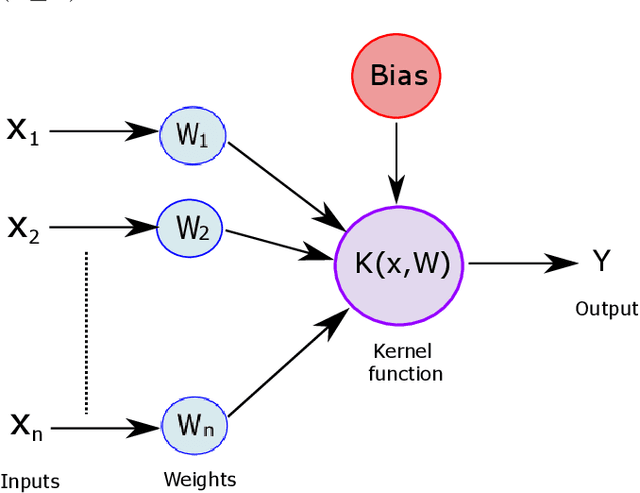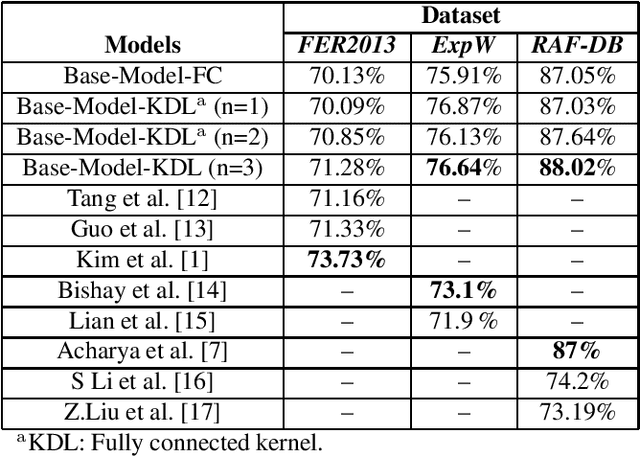M. Amine Mahmoudi
Kernel function impact on convolutional neural networks
Feb 20, 2023Abstract:This paper investigates the usage of kernel functions at the different layers in a convolutional neural network. We carry out extensive studies of their impact on convolutional, pooling and fully-connected layers. We notice that the linear kernel may not be sufficiently effective to fit the input data distributions, whereas high order kernels prone to over-fitting. This leads to conclude that a trade-off between complexity and performance should be reached. We show how one can effectively leverage kernel functions, by introducing a more distortion aware pooling layers which reduces over-fitting while keeping track of the majority of the information fed into subsequent layers. We further propose Kernelized Dense Layers (KDL), which replace fully-connected layers, and capture higher order feature interactions. The experiments on conventional classification datasets i.e. MNIST, FASHION-MNIST and CIFAR-10, show that the proposed techniques improve the performance of the network compared to classical convolution, pooling and fully connected layers. Moreover, experiments on fine-grained classification i.e. facial expression databases, namely RAF-DB, FER2013 and ExpW demonstrate that the discriminative power of the network is boosted, since the proposed techniques improve the awareness to slight visual details and allows the network reaching state-of-the-art results.
Kernelized dense layers for facial expression recognition
Sep 22, 2020



Abstract:Fully connected layer is an essential component of Convolutional Neural Networks (CNNs), which demonstrates its efficiency in computer vision tasks. The CNN process usually starts with convolution and pooling layers that first break down the input images into features, and then analyze them independently. The result of this process feeds into a fully connected neural network structure which drives the final classification decision. In this paper, we propose a Kernelized Dense Layer (KDL) which captures higher order feature interactions instead of conventional linear relations. We apply this method to Facial Expression Recognition (FER) and evaluate its performance on RAF, FER2013 and ExpW datasets. The experimental results demonstrate the benefits of such layer and show that our model achieves competitive results with respect to the state-of-the-art approaches.
 Add to Chrome
Add to Chrome Add to Firefox
Add to Firefox Add to Edge
Add to Edge